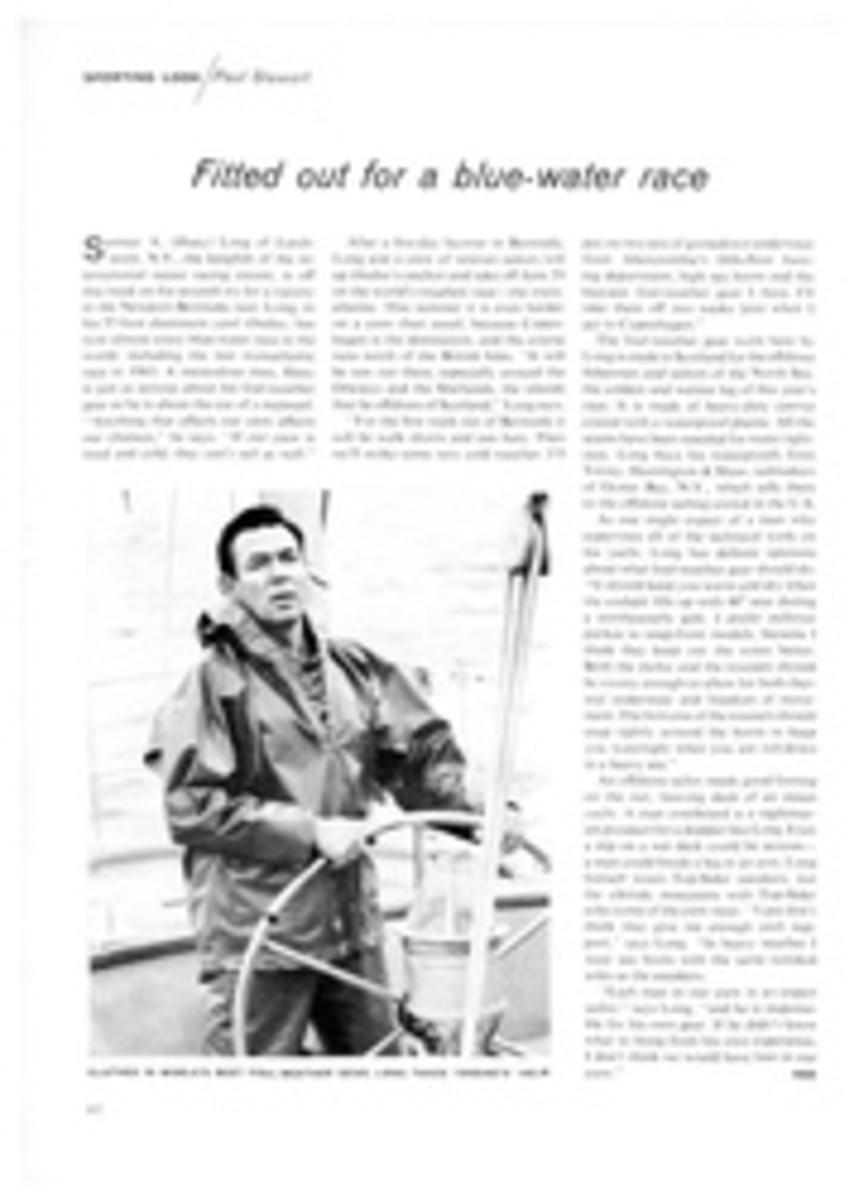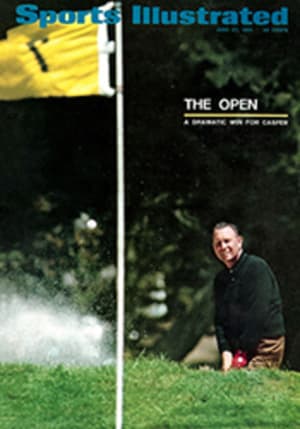
A GLORIOUS FESTIVAL OF FORDS
Winning the 24-hour race at Le Mans takes a neat combination of money, experience, skill and what a Frenchman might best express with a wave of the hand. Implicit in the wave would be everything that makes motor racing as much an art as a science. This week in France the combination belonged, overwhelmingly, to Henry Ford II. Ford had spent millions of dollars, sent tons of equipment, assembled more than 100 support men and had come along himself to taste the first American victory in the history of the race.
And sweet it was as three Ford GT Mark IIs—dubbed "Les Monstres" in the Paris press for their heft and outer-space looks—paraded down the rain-spattered homestretch Sunday afternoon and across the finish line to take the top three places. First across was the car of American Ken Miles (co-winner at Daytona and Sebring) and New Zealander Denis Hulme, but the Le Mans officials declared New Zealand's Bruce McLaren and Chris Amon the winners on a technicality.
In any case Henry Ford had the victory he had been counting on, and in winning had blasted loose Enzo Ferrari's grip on the event (nine victories since the war, including the last six in a row). Ferrari was outnumbered by Ford eight to three in cars that had some chance of victory, and though two of the vivid red Italian racers were running one-two briefly at the one-quarter mark, they all expired from mechanical ailments within 17 hours. Behind the Fords at the finish came four Porsches from Germany—small-engined cars lacking the zip of the big ones but traditionally up near the top on brilliant cornering and durability.
Henry Ford moved into a local ch√¢teau early in the week, and as his troops deployed, Le Mans saw more Americans than at any time since the cleanup of German soldiers in World War II. This year's Ford planning was far tighter and slicker than in the company's two previous assaults. Team Managers Carroll Shelby, John Holman and Britain's Alan Mann were under the command of Racing Manager John Cowley. This was in sharp contrast to 1965, when so many people seemed to be calling the shots that Ford looked as if it were going down under its own fire. None of the big Fords finished.
This year, said Leo Beebe, executive director of the Ford racing operations, there would be no confusion. Beebe, a former basketball captain at Michigan, explained further that Ford "would play man to man up front to draw out the Ferraris, and employ a zone defense in the back."
The scheme seemed sound, but as race day approached Ford was becoming hard-pressed for drivers. Of those originally hired, Walt Hansgen had been killed in the early trials. Then Lloyd Ruby was injured in a plane crash and A.J. Foyt was burned while practicing for a Milwaukee race. Next, Scotland's Jackie Stewart was hurt in the Belgian Grand Prix.
Ford still had drivers of the caliber of Dan Gurney and Graham Hill, the Indianapolis 500 champion, but for some newcomers on the team, traveling at speeds over 200 mph on the long Le Mans straights was a fresh and tricky experience. "These speeds are ahead of human thought," said Ford's Frank Gardner, of Australia, driving as partner with the English baronet, Sir John Whitmore.
Ford lost still another driver in a dispute arising from a collision in practice between the Mark II of Dick Thompson, a Washington dentist and veteran racing man, and a slower Ford entered by Bill McKelvy, a Pittsburgh stockbroker. Thompson was disqualified for not reporting the accident and was replaced by Australian Brian Muir.
But through the week the Ford cars themselves were an impressive constant. Much improved since last year, they slashed seconds off Phil Hill's practice-lap record of 3 minutes 33 seconds (set last year in a Ford). "These cars are the most stable things I've ever driven on the straight," said Whitmore. The speed was there, and the victories at Daytona and Sebring had proved the cars could go a distance.
Meanwhile a storm blew up in the bicycle-shop atmosphere of the Ferrari camp. Britain's John Surtees, the ace of the team, had been saying the Fords should present no problem, "providing we don't get into a panic." Although the 4-liter Ferraris developed only 405 horsepower compared with the 475 of the huge 7-liter Fords, Surtees felt the Italian cars could make up for that deficiency in lightness and road-holding. But when Team Manager Eugenio Dragoni told Surtees that a third driver, Italy's Ludovico Scarfiotti, was joining him and Englishman Mike Parkes as co-driver of his car, Surtees rebelled. Dragoni said that he was concerned over the injuries Surtees had suffered last year in a crash in Canada, but Surtees took this as an affront to himself and his nationality and blazed off to see Enzo Ferrari in Italy. He did not come back.
At 4 o'clock Saturday afternoon 55 drivers ran to their cars in the time-honored Le Mans start, sparked their engines and set off in a crescendo of sound. Then there was silence as the crowd of more than 250,000 people waited for the machines to complete the first 8.36-mile lap and rush through the grandstand area. When they arrived, the leaders were three of those American "monsters," foreshadowing the finish.
Rain fell spasmodically, taking the drivers by surprise, and at times the asphalt road was as slippery as ice. The contending Ferraris disappeared one by one, but Ford was not without its own moments of distress. Among the 26 cars that were sidelined before midnight were four of the factory Mark IIs.
At midnight Fords held positions one to six and also eight, the first four being the factory machines. The Mark IIs held the front four positions until nearly the 18th hour, relinquishing only one when the Dan Gurney-Jerry Grant car retired because of overheating. By then, the Ferrari factory cars were all gone.
The car driven by Miles and Hulme led more of the race than any of the other Fords, and Miles himself exceeded the 1965 race lap record five times during the 24 hours. It was therefore ironic that the Ford pit, in arranging for the Miles-Hulme Ford to finish in a dead heat with the one driven by McLaren and Anion, unwittingly presented victory to the less deserving pair. The two cars finished about level across the line, but there is a rule—Le Mans has more rules than a girls' boarding school—that in such circumstances the car starting farther from the line is the winner. The McLaren-Amon car had started farther away.
After McLaren and Anion were congratulated by Henry Ford and presented with bouquets and magnums of champagne, there was time for an inquest of sorts. Although Winner McLaren said it had been "a copybook race," he claimed he felt sick at the result. Swallowing his disappointment. Ken Miles gallantly said, "It was supposed to be a dead heat, but a rule is a rule and there is nothing you can do about it." Moments later the atmosphere brightened when fellow New Zealander Hulme slapped McLaren on the back, exclaiming, "You beauty, good on you, mate!" It had been a beautiful weekend for Fords and Kiwis.
PHOTO
Powering through a turn, the McLaren-Amon Ford heads toward victory—and confusion.

